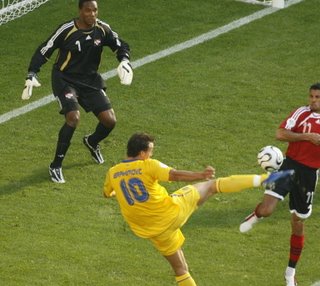This past Thursday we had a real forest fire in our community. It was called the Green fire and burned 35 acres about four miles from my house and it burned up the trail head for the trail that my wife and I hike on.
I can't recall if I have mentioned my fire fighting involvement on this site before. We live in the woods in rural Arizona where there is a high forest fire danger. My wife and I have been very involved with the Walker Fire Protection Association since we moved in to our cabin full time, this is my fourth fire season and I am one of two assistant fire chiefs. If you are interested you can read more about our department
here and
here.
The Forest Service was the first to respond which means we could not go unless we were called. The initial need from our department was a water tender (this is a big water truck). Shortly there after they requested a type-6 vehicle (this is a pick up truck with 250-300 gallons of water and are very useful in forest fires).
Despite being ordered to the fire I had limited expectations as to what our involvement would be, typically when the forest service is managing a fire they don't really want our help. On most fires we are the first to arrive, assume incident command, work the fire for a few hours and then are relieved from the fire and cede command to the forest service.
Early on in the fire the wind kicked up and they pulled everyone off the fire. This was a potential problem. What saved the day was the air support available to us. We had two helicopters dropping water and small plane dropping a retardant called slurry.
We stood around for a while and then were assigned to work with a crew from the Sequoia National Forest watching for spot fires. A spot fire is when wind (the conditions were very windy at the Green Fire) picks up an ember or something similar and carries it some distance to start another fire. Not recognizing a spot fire can be dangerous because often a spot fire, once it is going, will run back to the main fire, potentially causing control to be lost and endangering anything in between.
Sure enough we had a spot fire and I was the one to see it. It took us about 20 minutes to work on it. It was burning very hot (because of the manzanita) and smoky. When we first got to it I saw it jump about 8 feet in one second, I had never seen fire move that quickly. I sucked in a little smoke and we worked very hard getting it out.
Given my role as assistant chief I was there as the boss of the type six engine and had to keep tabs on the water tender as well, for a time before we were assigned to the spot fire duty.
Although we did relatively little in our five hours at the fire it was fulfilling nonetheless. Also we received some very positive feedback from the folks managing the fire.

One of the nerdier aspects my interest in fire fighting is seeing the various rigs that other crews have.
We just added a brand new type six to our very old fleet and hopefully we can get another new truck in the next few years.
This one caught my eye at the Green Fire. It belongs to the Black Timber Crew from Nevada. I was able to find out that they built it themselves, and that it carries 700 gallons of water. Since it is a home made truck I'm not entirely sure if it would be considered a type two vehicle or something else.
Something like this is probably too big for our roads but it gives some good ideas if we want try to build the next one ourselves.
 This is Brazilian soccer player Fred's moment of glory as he punched in the go ahead goal against Australia.
This is Brazilian soccer player Fred's moment of glory as he punched in the go ahead goal against Australia.








